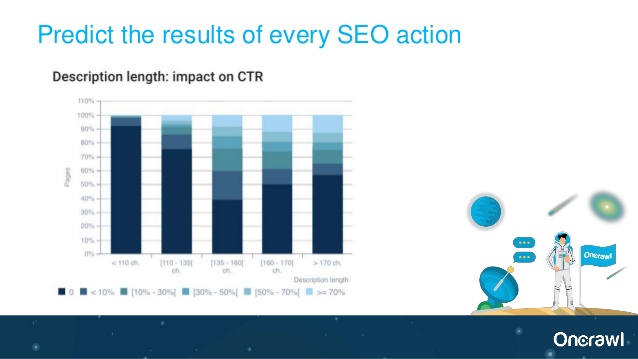
A deep dive into the risks and rewards of integrating our business data with SEO data, and how you can predict with accuracy the impact on your website’s SEO.
Overview
Speaker: François Goube
Job role and company: CEO at OnCrawl
Twitter profile: @francoisgoube
LinkedIn profile: www.linkedin.com/in/francoisgoube/
Link to the slides:
What was the talk about?
There’s long been a discussion within digital about what SEO is – should we call it an art or a science? François Goube was very clear in his talk: SEO is a science and it needs to be approached with the forensic mindest that defines scientists.
As a science, for SEO to achieve deliverable, repeatable, and sensible results, you need a firm understanding of the environment you’re operating in. For François, this means knowing thinking like a business owner and understanding the constraints (such as AOV and profit margins) that you’re operating with.
To get inside the head of a business owner when tackling the technical SEO for a site, you’ll need to compare the highest revenue pages and highest click depth pages Google Search Console CTR, You’ll also have to adopt this approach with the Google Analytics data. Why? In order to measure tech SEO changes like structured data.

Fave quote
“SEOs need to understand biz constraints like AOV and profit margins.”
Potential impact on the industry
So, what does this all mean for technical SEOs? In short, you must prioritise pages based on revenue. This shouldn’t necessarily mean a big shift in culture, but it might force a change in mentality. Why? Because the end result of your strategy will be an internal link that matches business constraints, not one that aligns with business ambitions.

Key takeaways
- SEO is a science (not an art), so be forensic
- SEOs need to think like business owners
- SEOs should be optimising page click depth based on revenue
